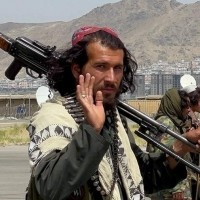Больше историй
28 апреля 2024 г. 19:10
150
Развитие науки в средневековье в домоногольский период
Читая главу про развитие науки в средневековье, приходишь к мысли, что я никогда и не задумывался об истории науки в тот период.
Понятно, что сначала науку "делали" древние греки, манускрипты хранились в библиотеке Александрии. Далее эта библиотека перешла к арабам. Арабы красавцы, перевели все, научились.
Было интересно узнать, что самая большая часть шла через отвоевывание Испании европейцами.
Конечно, что-то шло из Византии, но эта часть была ничтожно мала. Отрывочек ниже рассказывает историю:
In 967, the French cleric and scholar Gerbert of Aurillac (who in 999 would become Pope Sylvester II) arrived in Spain for a three-year period of study at a monastery in Catalonia. There he had access to manuscripts that had filtered over the border from Muslim-held al-Andalus. He took back to France knowledge of Arabic technology such as the water clock and the astrolabe, and of a type of abacus that used a decimal system. This was the first example of the system’s use in medieval Europe. It was a small beginning, and one paralleled in southern Italy where a medical school was established at Salerno in the 9th century. A few Islamic manuscripts reached the school in the early years, but many more arrived in the late 11th century when Muslim doctor Constantine the African returned from Qairawan in Tunisia. He had gone there to study medicine, and brought back with him works such as the Complete Art of Medicine by Ali ibn al-Abbas al-Majusi (known in the West as Haly Abbas), parts of which he then translated into Latin. This translation gave Western doctors and scholars access to comparatively advanced Muslim medical knowledge. Classical Greek texts arrived directly from the Byzantine Empire to the West (in particular Pisa, which had a trading quarter in Constantinople), including works by the philosopher Aristotle. The main channel for the transmission of Islamic learning into Europe, however, continued to be Spain. As Islamic Spain shrank, pressurized by the Reconquista, the flow of materials accelerated. The Christian reconquest spread increasingly into Muslim emirates until, in 1085, Alfonso VI of Castile captured Toledo. The city became a center for the translation of Arabic works by an international group including the Englishman Herbert of Ketton, Slav Hermann of Carinthia, the Frenchman Raymond of Marseilles, Jewish scholar Abraham ibn Ezra, and Italian Gerhard of Cremona. In the mid-12th century, the group translated many Arabic texts into Latin, including works on mathematics, medicine, and philosophy. Western Europe now had access to Ptolemy’s Almagest, and to the medical works of Galen, as well as access to new works by Arabic writers who had built on or summarized the work of their ancient predecessors, such as ibn Sina’s Canon of Medicine. This five-book encyclopedia became one of the most widely used treatises in European medical schools until the 16th century.


